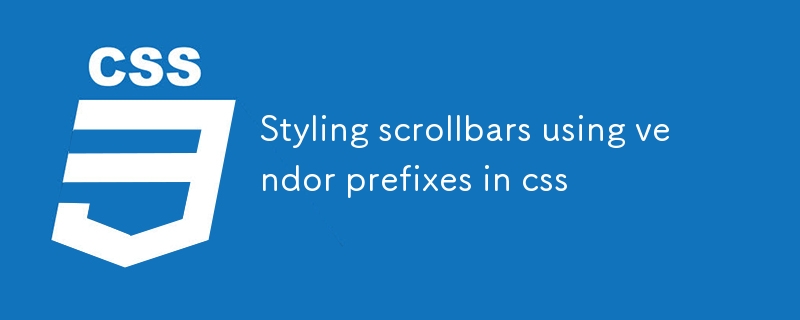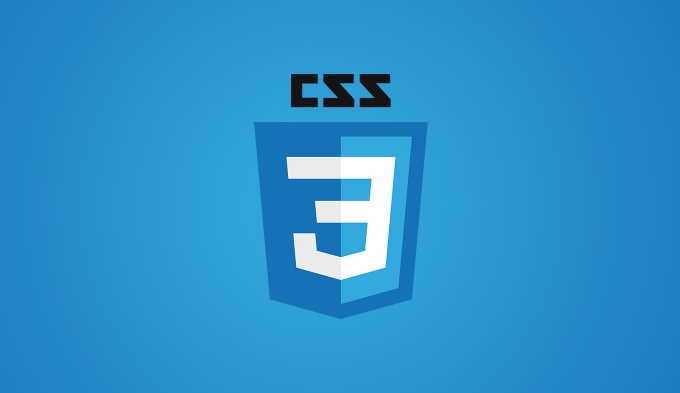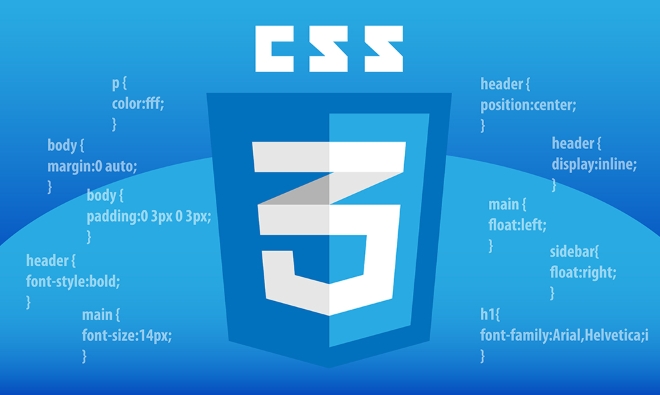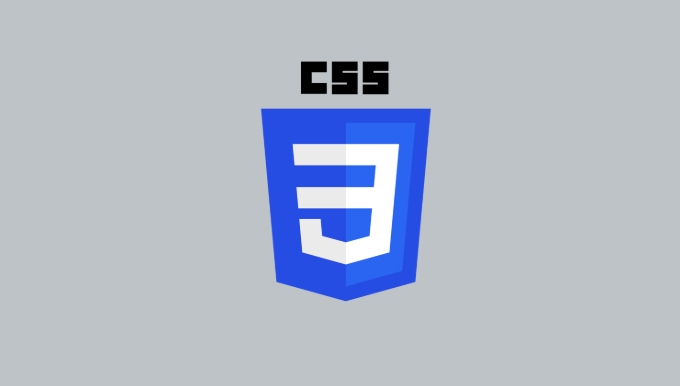To add styles to scrollbars, use the -webkit-scrollbar pseudo-element to customize the appearance of scrollbars in the WebKit browser. 1. Use ::-webkit-scrollbar to set the width; 2. Use ::-webkit-scrollbar-track to define the track background; 3. Use ::-webkit-scrollbar-thumb to set the slider color and rounded corners; 4. Add a hover effect to enhance interactive feedback. For non-WebKit browsers such as Firefox, scrollbar-width can be used to control the scrollbar-width, and scrollbar-color sets the slider and track color. It is recommended to combine JavaScript plug-ins to achieve cross-browser consistency, while paying attention to maintaining usability and adapting to different theme backgrounds, but we need to pay attention to compatibility and future maintenance issues.

Adding styles to scroll bars is originally a headache, because the default scroll bar style looks different on different systems and browsers. If you want to unify the appearance of the scrollbar, especially to implement custom styles in WebKit browsers such as Chrome and Safari, you have to use the pseudo -webkit-scrollbar . However, it should be noted that this approach is mainly aimed at the "private" features of the WebKit kernel browser, so vendor prefixes are needed.

How to style scrollbars using -webkit-scrollbar
The WebKit browser allows you to customize different parts of the scrollbar through a set of pseudo-elements, including sliders, tracks, up and down arrows, etc. You can write this way:

::-webkit-scrollbar {
width: 8px;
}
::-webkit-scrollbar-track {
background: #f1f1f1;
}
::-webkit-scrollbar-thumb {
background: #888;
border-radius: 4px;
}
::-webkit-scrollbar-thumb:hover {
background: #555;
}This code will set the width of the scrollbar to 8 pixels, the track color to light gray, the slider color to dark gray, and turn black when the mouse hovers. These styles will only be effective in browsers that support WebKit and are not valid in Firefox or IE.
How to handle scrollbar styles in non-WebKit browsers?
Currently, mainstream non-WebKit browsers, such as Firefox, do not support -webkit-scrollbar . But you can do some basic style control through scrollbar-width and scrollbar-color :

/* Firefox */
* {
scrollbar-width: thin;
scrollbar-color: #888 #f1f1f1;
}-
scrollbar-widthcan be set toauto,thinor specific pixel values. -
scrollbar-colorcontrols the color of the slider and the track, and the format is two color values. The first is the slider color and the second is the track color.
Although the style adjustments this way can be made are relatively limited, it can at least maintain a simpler appearance.
Some practical suggestions for scroll bar style design
- Keep consistency : If your application or website needs to display a consistent scrollbar style across browsers, you may want to consider using JavaScript plugins (such as OverlayScrollbars or perfect-scrollbar) that can simulate consistent scrollbar styles in a variety of browsers.
- Don't affect usability : The scroll bar is too narrow or the color contrast is not enough, which may make it difficult for users to operate, especially on touch screen devices.
- Be careful when fitting in dark backgrounds : If you use dark themes, remember to adjust the scrollbar color to make sure it is not "invisible".
Finally, please remind us of compatibility and maintenance issues
- Using
-webkit-scrollbaris a hack method that may not be supported by all browsers for a long time in the future. - If you just want the scrollbar to look a little cleaner, instead of completely redoing a UI, that's enough with simple color and size adjustments.
- The default scroll bar behavior under different operating systems is also different. For example, the scroll bar on macOS is translucent and automatically hidden by default, while it is always displayed on Windows.
Basically that's it. To put it bluntly, using -webkit-scrollbar can solve some of the problems of visual unity, but don't expect it to be perfectly presented in all environments.
The above is the detailed content of Styling scrollbars using vendor prefixes in css. For more information, please follow other related articles on the PHP Chinese website!

Hot AI Tools

Undress AI Tool
Undress images for free

Undresser.AI Undress
AI-powered app for creating realistic nude photos

AI Clothes Remover
Online AI tool for removing clothes from photos.

Clothoff.io
AI clothes remover

Video Face Swap
Swap faces in any video effortlessly with our completely free AI face swap tool!

Hot Article

Hot Tools

Notepad++7.3.1
Easy-to-use and free code editor

SublimeText3 Chinese version
Chinese version, very easy to use

Zend Studio 13.0.1
Powerful PHP integrated development environment

Dreamweaver CS6
Visual web development tools

SublimeText3 Mac version
God-level code editing software (SublimeText3)

Hot Topics
 What is 'render-blocking CSS'?
Jun 24, 2025 am 12:42 AM
What is 'render-blocking CSS'?
Jun 24, 2025 am 12:42 AM
CSS blocks page rendering because browsers view inline and external CSS as key resources by default, especially with imported stylesheets, header large amounts of inline CSS, and unoptimized media query styles. 1. Extract critical CSS and embed it into HTML; 2. Delay loading non-critical CSS through JavaScript; 3. Use media attributes to optimize loading such as print styles; 4. Compress and merge CSS to reduce requests. It is recommended to use tools to extract key CSS, combine rel="preload" asynchronous loading, and use media delayed loading reasonably to avoid excessive splitting and complex script control.
 External vs. Internal CSS: What's the Best Approach?
Jun 20, 2025 am 12:45 AM
External vs. Internal CSS: What's the Best Approach?
Jun 20, 2025 am 12:45 AM
ThebestapproachforCSSdependsontheproject'sspecificneeds.Forlargerprojects,externalCSSisbetterduetomaintainabilityandreusability;forsmallerprojectsorsingle-pageapplications,internalCSSmightbemoresuitable.It'scrucialtobalanceprojectsize,performanceneed
 Does my CSS must be on lower case?
Jun 19, 2025 am 12:29 AM
Does my CSS must be on lower case?
Jun 19, 2025 am 12:29 AM
No,CSSdoesnothavetobeinlowercase.However,usinglowercaseisrecommendedfor:1)Consistencyandreadability,2)Avoidingerrorsinrelatedtechnologies,3)Potentialperformancebenefits,and4)Improvedcollaborationwithinteams.
 CSS Case Sensitivity: Understanding What Matters
Jun 20, 2025 am 12:09 AM
CSS Case Sensitivity: Understanding What Matters
Jun 20, 2025 am 12:09 AM
CSSismostlycase-insensitive,butURLsandfontfamilynamesarecase-sensitive.1)Propertiesandvalueslikecolor:red;arenotcase-sensitive.2)URLsmustmatchtheserver'scase,e.g.,/images/Logo.png.3)Fontfamilynameslike'OpenSans'mustbeexact.
 What is Autoprefixer and how does it work?
Jul 02, 2025 am 01:15 AM
What is Autoprefixer and how does it work?
Jul 02, 2025 am 01:15 AM
Autoprefixer is a tool that automatically adds vendor prefixes to CSS attributes based on the target browser scope. 1. It solves the problem of manually maintaining prefixes with errors; 2. Work through the PostCSS plug-in form, parse CSS, analyze attributes that need to be prefixed, and generate code according to configuration; 3. The usage steps include installing plug-ins, setting browserslist, and enabling them in the build process; 4. Notes include not manually adding prefixes, keeping configuration updates, prefixes not all attributes, and it is recommended to use them with the preprocessor.
 What are CSS counters?
Jun 19, 2025 am 12:34 AM
What are CSS counters?
Jun 19, 2025 am 12:34 AM
CSScounterscanautomaticallynumbersectionsandlists.1)Usecounter-resettoinitialize,counter-incrementtoincrease,andcounter()orcounters()todisplayvalues.2)CombinewithJavaScriptfordynamiccontenttoensureaccurateupdates.
 CSS: When Does Case Matter (and When Doesn't)?
Jun 19, 2025 am 12:27 AM
CSS: When Does Case Matter (and When Doesn't)?
Jun 19, 2025 am 12:27 AM
In CSS, selector and attribute names are case-sensitive, while values, named colors, URLs, and custom attributes are case-sensitive. 1. The selector and attribute names are case-insensitive, such as background-color and background-Color are the same. 2. The hexadecimal color in the value is case-sensitive, but the named color is case-sensitive, such as red and Red is invalid. 3. URLs are case sensitive and may cause file loading problems. 4. Custom properties (variables) are case sensitive, and you need to pay attention to the consistency of case when using them.
 What is the conic-gradient() function?
Jul 01, 2025 am 01:16 AM
What is the conic-gradient() function?
Jul 01, 2025 am 01:16 AM
Theconic-gradient()functioninCSScreatescirculargradientsthatrotatecolorstopsaroundacentralpoint.1.Itisidealforpiecharts,progressindicators,colorwheels,anddecorativebackgrounds.2.Itworksbydefiningcolorstopsatspecificangles,optionallystartingfromadefin






